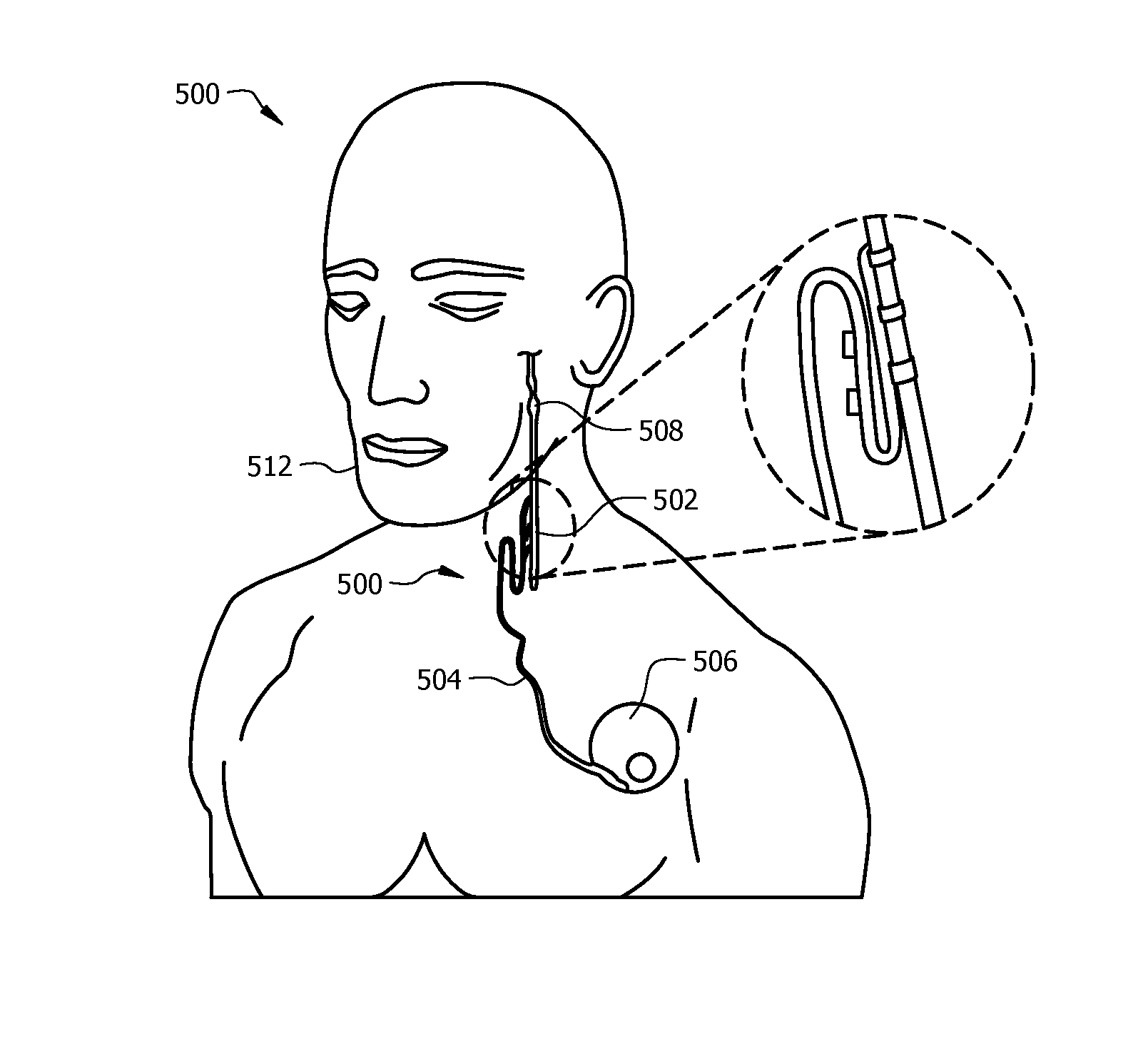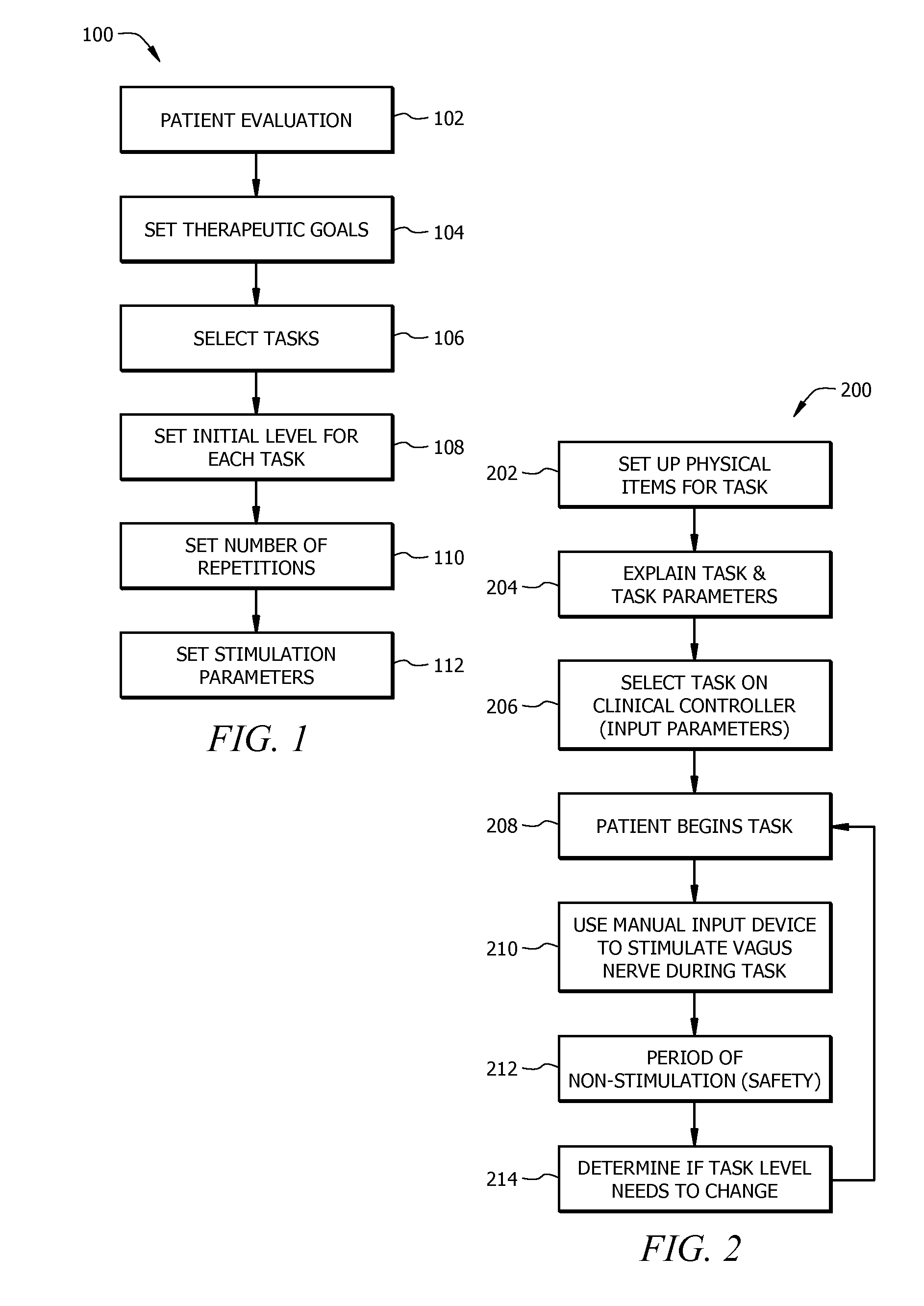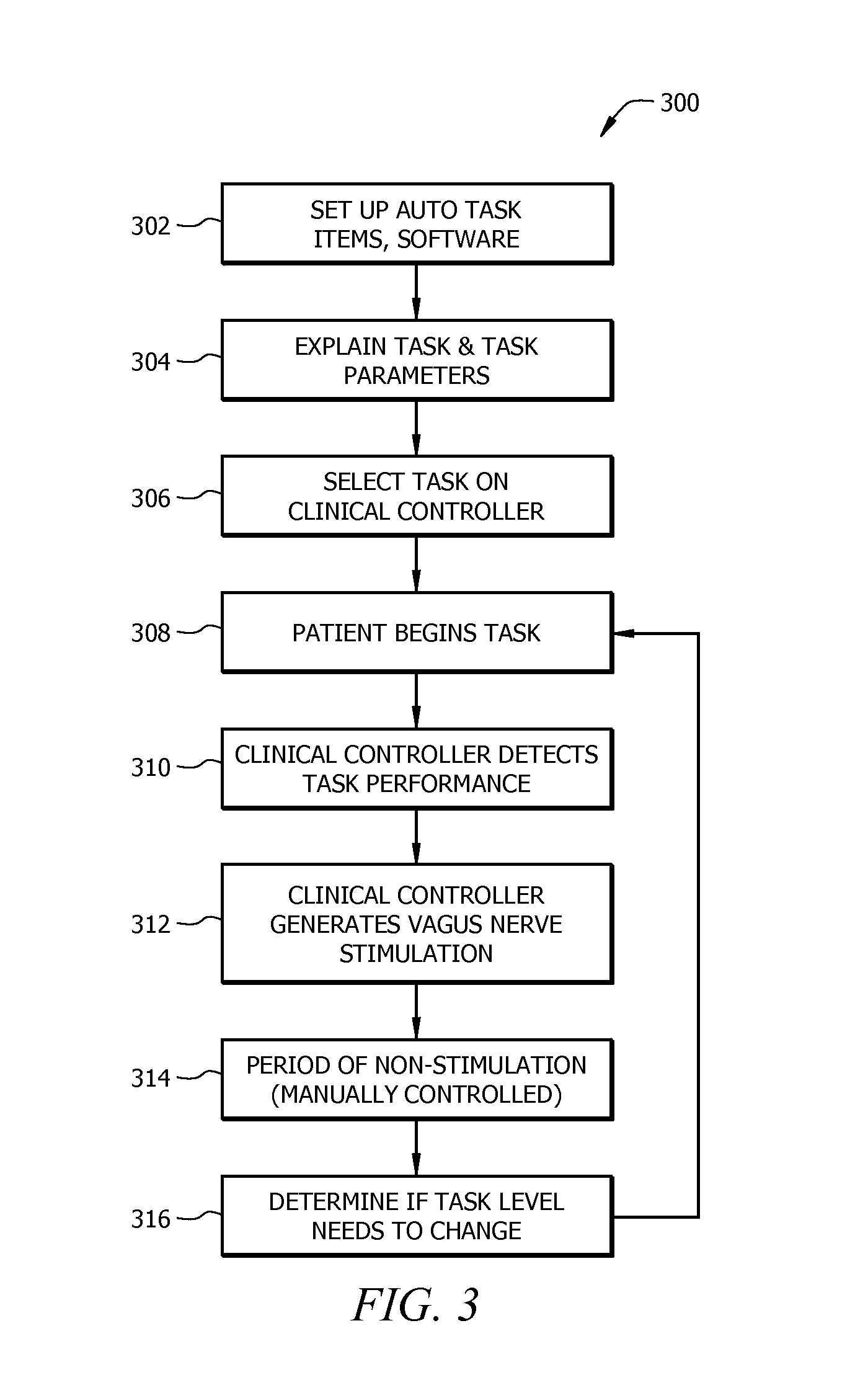Methods, systems, and devices for pairing vagus nerve stimulation with motor therapy in stroke patients
a vagus nerve and patient technology, applied in the field of stroke patients' vagus nerve stimulation and motor therapy, can solve the problems of affecting occupational performance, and affecting the patient's quality of life, and affecting the quality of life of patients and their loved ones
- Summary
- Abstract
- Description
- Claims
- Application Information
AI Technical Summary
Benefits of technology
Problems solved by technology
Method used
Image
Examples
example 1
[0074]Grasp and Release. The patient's goal is to be able to unload dishwasher. The target task involves the ability to grasp, manipulate, and release a variety of objects along with a variety of strength and range of motion requirements and some degree of endurance (e.g., being able to stand for the entire duration).
[0075]Materials: spoon, fork, knife, large serving spoon, large and medium mixing bowl, coffee mug, drinking glass, small plate, large dinner plate, a DYCEM mat, foam.
[0076]Method: First, Patient sits at table with objects at midline Second, for each task repetition, the patient reaches out to grasp object and place on shelf about six feet above the table. Third, 10 objects are lined up to allow continuous repetition of the movement and achieve high numbers.
[0077]Grading: The task can be upgraded in difficulty by: challenging patient that a certain number of repetitions be completed in one minute; using a variety of sizes instead of the same size / shape in a row; requiri...
example 2
[0080]Handwriting. The patient's goal involves being able to write checks and thank you notes.
[0081]Materials: pen, paper, pencil, dry erase board, cylindrical foam, sand tray, shaving cream, and tray.
[0082]Method: First, the patient sits at a table with a tray with a mound of shaving cream. Second, the patient practices spreading the cream evenly throughout the tray. Third, the patient practices free writing with a finger or with a stylus. Fourth, the patient practices loop drawing or free writing with writing utensil of choice. Fifth, the patient practices filling out forms or line writing within constrained box.
[0083]Grading: The tasks can be upgraded in difficulty by: increasing the number of words written (e.g., phone number, address, sentences); decreasing task difficulty by using built up writing utensils to aid in grip; and / or decreasing task difficulty by using dry erase board, shaving cream, writing large letters or loops.
example 3
[0084]Bilateral activity. The patient's goal involves folding laundry.
[0085]Materials: 10 wash cloths, 10 hand towels, 10 bath towels, 10 t-shirts, 10 pairs of socks.
[0086]Method: First, the patient may sit or stand at the table. Second, the patient may fold towels at midline. Third, all towels may be folded in half and then in half again using bilateral upper extremities. Fourth, folded towels may be placed in laundry basket.
[0087]Grading: Tasks may be decreased or increased in difficulty by changing the size and weight of objects. Tasks may be decreased or increased in difficulty by changing the number of folds required in the object. Task can be increased or decreased in difficulty by changing the location of where the object is to be grasped or placed. The therapist may unfold the towels to allow rapid repeat of task.
PUM
 Login to View More
Login to View More Abstract
Description
Claims
Application Information
 Login to View More
Login to View More - R&D
- Intellectual Property
- Life Sciences
- Materials
- Tech Scout
- Unparalleled Data Quality
- Higher Quality Content
- 60% Fewer Hallucinations
Browse by: Latest US Patents, China's latest patents, Technical Efficacy Thesaurus, Application Domain, Technology Topic, Popular Technical Reports.
© 2025 PatSnap. All rights reserved.Legal|Privacy policy|Modern Slavery Act Transparency Statement|Sitemap|About US| Contact US: help@patsnap.com



